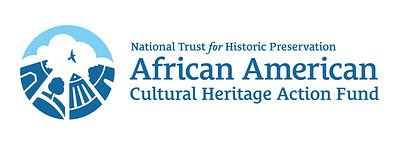
Nina Simone’s Childhood Home Restored: A Legacy Reclaimed in North Carolina
Years after falling into disrepair, the home where Nina Simone spent her formative years has been meticulously restored, becoming a powerful symbol of artistic heritage and a beacon of cultural preservation.
Nina Simone’s Childhood Home Restored: A Legacy Reclaimed in North Carolina
TRYON, NC – November 17, 2025 – After decades of neglect and facing the threat of demolition, the humble childhood home of music icon Nina Simone in Tryon, North Carolina, has been painstakingly restored. The project, spearheaded by the African American Cultural Heritage Action Fund (AACHAF) and a collective of artists, represents more than just the preservation of a building; it’s a reclamation of a vital piece of American musical history and a testament to the power of place in shaping identity.
A Home in Disrepair, a Legacy at Risk
Built in the early 1900s, the small, three-room clapboard house on East Main Street bore little resemblance to the home where a young Eunice Waymon – later known as Nina Simone – first discovered her musical gift. By the early 2000s, the house had fallen into severe disrepair, its roof crumbling and floors sagging. Facing demolition, the property was purchased in 2016 by a collective of four prominent African American artists, Adam Pendleton, Rashid Johnson, Ellen Gallagher, and Julie Mehretu, who formed Daydream Therapy LLC.
“The condition was truly dire,” stated one source close to the project. “It needed everything – a new roof, foundation work, electrical and plumbing upgrades. But beyond the physical state, it was the symbolic weight of potentially losing this tangible link to Nina Simone’s early life that motivated everyone involved.”
Daydream Therapy LLC’s initial purchase prevented the home’s destruction, but securing funding for a comprehensive restoration proved challenging. “It wasn't just about restoring the structure,” explained a representative from AACHAF. “It was about understanding the historical context, honoring the memories, and creating a space that could tell a compelling story.”
Artistic Philanthropy and Community Collaboration
The artists' commitment attracted the attention of the African American Cultural Heritage Action Fund, a division of the National Trust for Historic Preservation, which designated the home a “National Treasure” in 2018. What followed was a multi-year fundraising campaign that involved crowdfunding, grants from major philanthropic foundations like the Mellon and Tejemos Foundations, and a landmark auction gala co-curated by tennis champion Venus Williams. The final fundraising total exceeded expectations, enabling a meticulous restoration that respected the original character of the home while incorporating modern amenities.
The restoration wasn't just a top-down effort. Throughout the process, the project team prioritized community engagement, working closely with local residents, particularly those in the historically African American East Side neighborhood. St. Luke CME Church, where Simone's mother served as a minister, played an integral role in providing historical context and ensuring the restoration reflected the community's values.
“There was a real desire to not simply impose a vision but to co-create something that the entire community could be proud of,” said a local community member involved in the project. “This isn’t just about Nina Simone; it’s about honoring the history and resilience of this entire neighborhood.”
Uncovering a Formative Past
Beyond the physical restoration, the project aimed to illuminate Simone’s early life in Tryon. Born Eunice Kathleen Waymon in 1933, she displayed prodigious musical talent from a young age, beginning piano lessons at the age of three and captivating audiences with her skills at St. Luke CME Church. The home served as the backdrop for her formative years, shaping her artistic sensibilities and instilling in her a deep sense of social justice.
Research uncovered compelling details about Simone’s childhood experiences, including the challenges she faced growing up in the segregated South. One particularly poignant story revolves around a recital at the Tryon Library, where her parents were forced to move from front-row seats to accommodate white audience members. Young Eunice refused to play until they were returned to their rightful place – an act of defiance that foreshadowed her lifelong commitment to civil rights.
“That incident was pivotal in shaping her worldview,” explained a local historian. “It taught her the importance of standing up for what’s right, even in the face of adversity.” The restored home will serve as a space to share these stories and educate future generations about Simone's legacy.
The restoration team ensured the home’s restored character remained true to the era in which Simone lived, using historically appropriate materials and techniques. Modern amenities, such as geothermal heating and cooling, were incorporated sensitively to ensure the building’s long-term sustainability and accessibility. The restored yard also includes a carefully preserved century-old Magnolia tree, a silent witness to Simone’s childhood.
While the home is not yet open to the public, plans are underway to develop a cultural heritage tourism program that will welcome visitors and share the stories of Nina Simone and the African American community in Tryon. The long-term vision includes an arts residency program that will provide opportunities for emerging artists to connect with Simone’s legacy and create new works inspired by her music and activism.
📝 This article is still being updated
Are you a relevant expert who could contribute your opinion or insights to this article? We'd love to hear from you. We will give you full credit for your contribution.
Contribute Your Expertise →